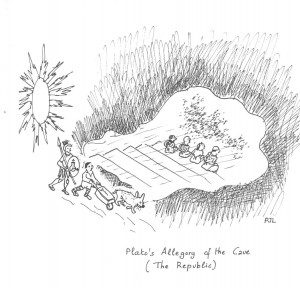While a lot has been made about the National Institute of Standards and Technology (NIST) traceable standards and NIST’s own reporting of uncertainty. There is a large mistake that has developed even among well-credentialed scientists in that NIST-based and reported expressions of Uncertainty Measurement (UM) are the be all and end all of the conversation and constitutes Bayesian-based expanded uncertainty reporting.
It is not.
This misconception is not unlike Plato’s allegory of the cave as written in The Republic:

In The Republic the ancient Greek philosopher Plato uses the Allegory of the Cave to explain the limitations of perception versus objective reality. In this construct he asks the reader to imagine a group of people who have lived chained in a cave all of their lives, facing a blank wall without the ability to turn around or change the direction of their gaze. Behind them a fire rages. These prisoners watch year in and year out the shadows projected on the wall. They see the fluttering images as time goes by as people and objects pass in front of a fire behind them. Naturally, they are limited in their world view and as such they begin to ascribe forms to these shadows and make certain assumptions about the world within which they live. Sometimes they are right, but most times they are wrong due to their extremely limited ability to directly view objective reality. According to Plato, the shadows are as close as the prisoners get to see and experience objective reality. Later the prisoners are released from their bondage to experience for the first time the world free of limitations and the narrowness of their world view. Their earlier incorrect perceptions are revealed. Plato then explains how the reader is like a prisoner who is freed from the cave and comes to understand that the shadows on the wall are not the extent of reality at all, as the prisoner and the reader now can perceive the true form of reality rather than the mere shadows seen by the prisoners.
As we examined before together, metrology and the honest reporting of expanded uncertainty is crucial in presenting the truth and the limitations of any analytical or even non-analytical measure.
Here is the truth straight from NIST:
NIST Technical Note 1297, Guidelines for Evaluating and Expressing the Uncertainty of NIST Measurement Results, 1994 Edition.
In addition to the uncertainty indicated by NIST, other uncertainties are inherent in the instrument, associated with the method or protocol in using the instrument, with the operator of the instrument, and with the physical environment (pressure, temperature, humidity, etc.) in which the measurements are made. Thus, the measurements made with the calibrated instruments or artifacts by organizations outside of NIST have total uncertainty budgets associated with them, only one component of which is the uncertainty reported to them by NIST.


